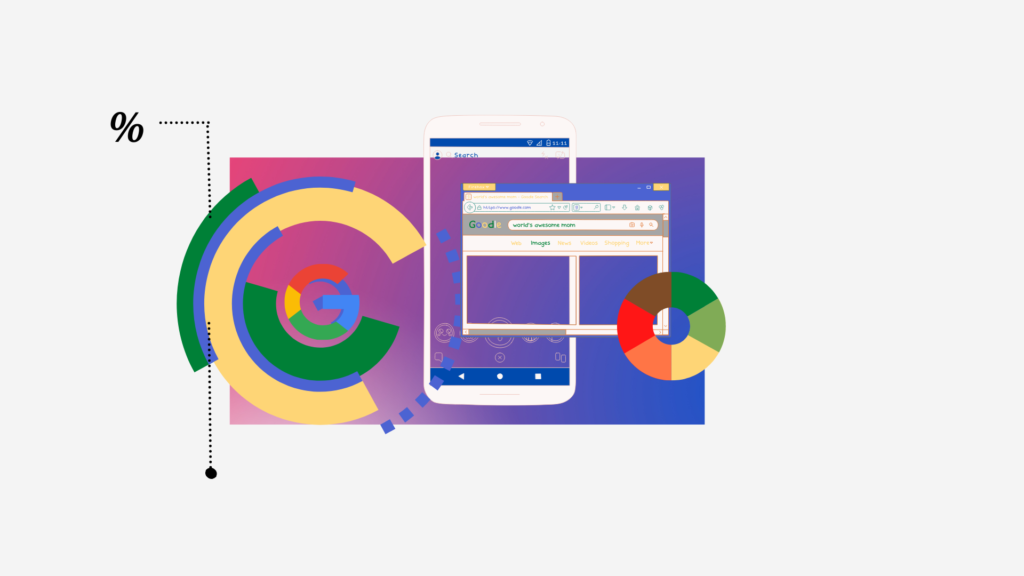
SEO 2023 is ever-changing.
At one point, you might think you know exactly what Google is looking for in SEO ranking. Then, an algorithm update throws a wrench in your SEO strategy.
What can your business do?
One way to improve the odds of ranking while future-proofing your business website against the inevitable algorithm changes is to identify and focus on Google’s core ranking factors.
There are several primary ranking factors, but we want to focus on the 11 most important ones to mitigate the risk of losing search engine visibility and organic traffic due to algorithm updates.
#1. Target Long-Tail Keywords

Long-tail keywords are longer, more specific search terms with relatively low search volume. The keywords tend to be 3+ words than the average ones.
People searching for specific long-term keywords are few. However, long search terms collectively make up a large chunk of what people search on Google. According to a recent study, 91.8% of all searches are long-tail keywords.
Why Are Long-Tail Keywords Important for SEO?
Long-tail keywords are critical for SEO for many reasons, but two main ones make them worth your time and effort.
- Long-Tail Keywords Have High Conversion Rates
Long-tail search terms are ultra-specific. People searching for long-term keywords have higher search intent and tend to be ahead in the buying cycle compared to people searching for head terms.
Consider the keyword “Google ranking,” for instance.
Someone searching for “Google ranking” is likely learning how Google ranking works and might not be ready to buy anything.
On the flip side, another person searching for “how to rank on Google 2022” probably knows how Google ranking work but wants to catch up with algorithm changes. Such a user is much closer to taking action than the first one.
As a result, traffic from long-tail keywords tends to convert well for businesses.
- Long-Tail Keywords are Less Competitive
One huge advantage of long-tail keywords is that they’re less competitive than shorter ones and are much easier to rank for.
When you type a short-tail keyword like “Social media marketing” on Google, you’ll find it has over 4 billion results on Google.

If you want your business to rank #1 on Google for the keyword, you need to outrank over 4 billion sites. To approach such competition correctly, you can target a long-tail version of that keyword, such as “social media marketing for small businesses.”
The long-tail keyword lowers the competition from 4.3 billion to 336 million, making it easier for your site to rank for the search term on Google.

How To Use Long-Tail Keywords In Your Business Website
You don’t want to include random long-tail keywords in your business website and cross your finger, hoping for results. You need an approach that delivers results.
To get relevant long-tail keywords that prospects already search for on Google, proceed as follows:
- Identify the blog topic you want to cover.
- Key in the generic title of the topic into Google and scroll down to the Related searches area.
- Identify long-tail keywords that relate to your parent topic.
- Check the keyword’s search volume on a tool like Ahref, Semrush, or other SEO tools to verify the keyword is worth the effort.
- If the keyword has a too-low search volume, find another one.
- Create content that addresses the user’s intent behind the keywords you choose.
The above approach is excellent because you’ll create content that appeals to your prospect and the search engines.
#2. Use Keywords In Alt Text for Images

The alt text describes an image briefly. For years, image SEO has been a ranking factor in Google images. Today, however, Google says that properly optimized images can also help pages rank better.
The alt text serves three main purposes:
- SEO: Alt texts help search engine crawlers to index images properly.
- Accessibility: The screen reader reads out alt text for visually impaired users.
- Context: When an image can’t load onto a page, the alt text appears as an alternative to give context to users.
Since alt texts are so important to Google, you should use them as a long-term SEO strategy. Google will not stop giving alt texts attention any time soon because it serves many purposes.
Your business website can leverage this fact by including images and optimizing them for SEO. Write descriptive alt texts to tell search engines and the visually impaired what your image is all about. Find a way to incorporate your primary or secondary keywords in your image’s alt text.
#3. Target Keywords with High Commercial Intent
For many businesses, keyword research focuses 100% on search volume. When a keyword has a bunch of searches, they will find it good enough.
However, you need to put a lot of weight on commercial intent. You need to consider how much the user is willing to spend when searching for a keyword.
For instance, when a searcher is in the early research stage of shopping, the keyword they type on the search engine will have less intent. In such a case, you can target such keywords with content like a checklist. Your aim with such content is to get in front of the customers early and make a good impression.
Otherwise, you should focus on creating content around ultra-specific keywords with high commercial intent, which is more likely to be a hot deal.
You should focus on keywords relevant to transactional searches and promise higher returns. After all, prospects searching using commercial intent keywords are waiting for you to take their money.
#4. Use Keywords in Headers
Placing keywords in the header tells Google and users that your content satisfies the search intent. Just like the table of contents offers users context, putting keywords in the header does the same for users and search engine bots.
While nearly everyone in the SEO world thinks keywords in the headlines are critical, you shouldn’t force them to fit if they don’t make sense. Consider Google recommendations and user experience before deciding where to place your target keywords or other variations. Avoid keyword stuffing at all costs.
The best way to use keywords in the header is as follows:
- Choose the target keywords you want to add to your post headers.
- Key the keywords into your keyword research tool and identify closely related ones.
- Include the keyword and its related keywords in your headers as much as possible.
#5. Get Your Site Inside of Features Snippets

Featured snippets are short texts that quickly answer a searcher’s query at the top of Google’s search results. Google automatically pulls content from web pages on its index and places it inside the Features Snippet box.
You can use the bait strategy to get your site inside of Featured Snippets:
- Find a keyword that you already rank for. If you don’t rank for any keywords, you have zero chance of getting in a Featured Snippet. According to industry studies, 99.58% of Featured Snippets come from the search results on the first page.
- Examine the Featured Snippet at the top of the search engine result and identify the type of Featured Snippet. There are several, including:
- Definition Featured Snippets: This is a snippet of text that gives users a direct and concise description and definition. The type of snippet answers “what is” questions. Google tends to use short definitions that are between 40 and 60 words long.
- Ordered list Featured Snippet: This Featured Snippet entails items presented in a specific order. Google uses an ordered list for questions that require a set of steps.
- Unordered list Featured Snippet: Google uses this type of Feature Snippet to present a list of items that require no specific order.
- Table Snippet: In a table snippet, Google pulls data from a page and displays it as a table
- Design a snippet of content to fit inside the Featured Snippet box.
#6. Create Linkable Content

Bloggers and site owners don’t link to “great content.” They link to sources.
Some content types earn links much more easily than others. When looking for backlinks, your business should create content that attracts links from other websites in your niche.
Since other businesses rarely link to commercial pages, your linkable content cannot be a product page or content with commercial content. You can focus on generating other benefits, such as:
- Social shares
- Brand awareness
- Monetization
- Increased referral traffic
- Increased organic search traffic
The best types of linkable assets you can create include:
Infographics or GIFographic
Infographic is the most popular linkable asset because it attracts a lot of links.
Your business can use infographics to present content in a highly visual format. However, infographics won’t always be the best choice for every business.
If you identify infographics as the best linkable asset for you, here’s how you can proceed to get backlinks:
- Pitch sites in your niche that actively publish infographics.
- Get extra links from infographic directories.
Online Calculators and Tools
Online tools and calculators can attract a lot of links. For instance, the backlink profile for CoSchedule’s Headline Analyzer has over 16K links from 3.6K referring domains.
The barrier to implementing an online tool or calculator as content is you need a decent budget to hire a designer, programmer, or coder. After development, pitch your tool or calculator to web pages that already talk about the problem your tool solves.
You can also use low-cost paid promotions to drive conversation around your tool or calculator.
Post Studies and Research
Studies and original research attract links. The two will work great if you’re reputable in your industry.
There are different ways to build links with studies and research. One of the most effective ways is to reconduct outdated popular studies and steal their links. Alternatively, you can find people already talking about ideas your study proves and pitch them.
Create tutorials and definitive guides
Most things worth learning are complicated to an extent. When you break them into definitive guides or tutorials, journalists and bloggers would gladly link to one guide than a bunch of different resources. However, to create a definitive guide, you need to be an expert on the subject matter.
After creating definitive guides, you should stay on the radar of people likely to link to you and steal links from less definitive guides.
#7. Include Multiple Media Types

One way to quickly rank on the SERP (search engine ranking page) is to use multiple media across your blog. Apart from images, you can include the following on your business website:
- Audio files
- Videos
- eBooks
- GIFs
Different media will engage your website visitors and increase dwell time while improving users’ experience.
Hubspot says that videos are the top form of media businesses use in most content strategies, overtaking even blogs. Today, over 86% of businesses leverage video marketing to grow their businesses.
Video content work because 84% of people say that watching a brand’s video convinced them to buy the product or service.
#8. Use Internal Links
The total time users spend on your entire website is a critical ranking factor for search engines. Higher dwell time shows search engines that you have high-quality and relevant content. More importantly, the longer visitors stay on your site, the further the funnel they’re likely to go.
Linking internally directs visitors deeper into your business website, which higher the chances of visitors having meaningful interaction with your content, such as:
- Leaving a comment on your blog post
- Sharing your content on social media
SEO experts believe each blog post should include at least 2-5 internal links. To do excellent internal linking:
- Select pages with additional content relevant to the topic the user found you from.
- Select anchor text that sounds natural and persuades users to click on the link
- Don’t use generic anchor text like “read more” or “click here.” Use more descriptive anchor text that helps Google understand how to index your page.
#9. Eliminate Spammy Backlinks
Backlinks are a major ranking factor. However, Google pays more attention to link quality rather than quantity.
In 2021, the search engine giant released an algorithm update that targets and devalues bad backlinks. While the algorithm doesn’t penalize an individual site, it stopped counting a lot of backlinks that many websites had grown accustomed to.
Your business should vet and remove spammy links that might be negatively affecting your business. You can proceed as follows to eliminate spammy backlinks:
- Execute an audit to assess backlinks your business website is currently receiving
- If you spot a spammy link, try to reach out to the website owners and ask them to remove it.
- Disavow a backlink if the website owner refuses to remove it
- Any site offering affiliate links to your site needs to qualify the link — ask any affiliate to add the correct HTML tag
#10. Build Your Brand
Since the late 2000s, Google has emphasized more on branding. The search engine looks for brand signals to filter out misinformation and provide search results that people can trust.
The emphasis has made brands a critical ranking factor.
When you represent your brand consistently across all your platforms, you can improve your revenue by up to 23%.
Besides being an SEO hack, branding increases customer loyalty and simplifies how your business presents value. 89% of buyers prefer to stay loyal to brands that share their value.
When you establish and grow your brand, you receive more traffic from branded and non-branded keywords. That’s why established brands see millions of organic traffic each month.
Here are some of the brand-building tips you can adopt:
- Determine the social platform your target audience hangs out on most and create a social strategy. After all, 82% of Americans use social media — your business should be on the so
- Create partnerships with complementary brands. You can approach companies with products and services that complement your business and check if you can work together.
- When planning your brand awareness, highlight your brand’s personality, value, and story. Talk more than just sales to resonate with your target audience more.
#11. Create Thought-Leadership Content
After you have created pillar content — targeting various keywords on your business site, you should start to take a strategic approach. Your website should be more than just an information site but one that demands authority.
You can start demanding authority by creating thought-leadership content.
54% of decision-makers admit spending over one hour a week reading thought leadership content. 71% of them admit that less than half of what they read gives them valuable insights.
The statistics say that you have a massive opportunity with thought-leadership content. However, thought leadership content requires you to look ahead and answer questions your audience isn’t even asking. Instead, you want to address subject matter experts and industry leaders by getting ahead of the current state of things.
The only problem with thought-leadership content is that it takes time to create. However, it’s well worth the effort.
When you create content that other brands in your industry look to, the content will build your brand and increase the number of backlinks you get.
Here is how you can create thought leadership:
- Study the trends on where your industry is heading in the next 5-10 years and create content that speaks on them.
- Address frequently asked questions in your niche that one can address with data. Note the topics you can tackle and have resources to provide relevant data points.
- Execute internal and external research and create content that highlights your findings. Such content will establish you as an industry leader and get you more backlinks from other bloggers citing your content.
- Stay up-to-date on news and events affecting your industry. Then, be the first to present your views on the topic and back them up with valuable insights.
Improve Your Search Presence in 2023 and Beyond
While Google’s algorithm and SEO approach change with time, one fact remains constant:
Relevant, high-quality content always holds a solid place to start.
If you employ the 11 SEO practices above, nothing will stop you from dominating SEO with Google 2022. The technique above improves your content for both users and crawl bots to ensure you have an engaging experience.
If you’re facing problems running your SEO campaigns, GetKnowticed can help you get more value. Book a free consultation today to help you get the most out of your search engine optimization.

